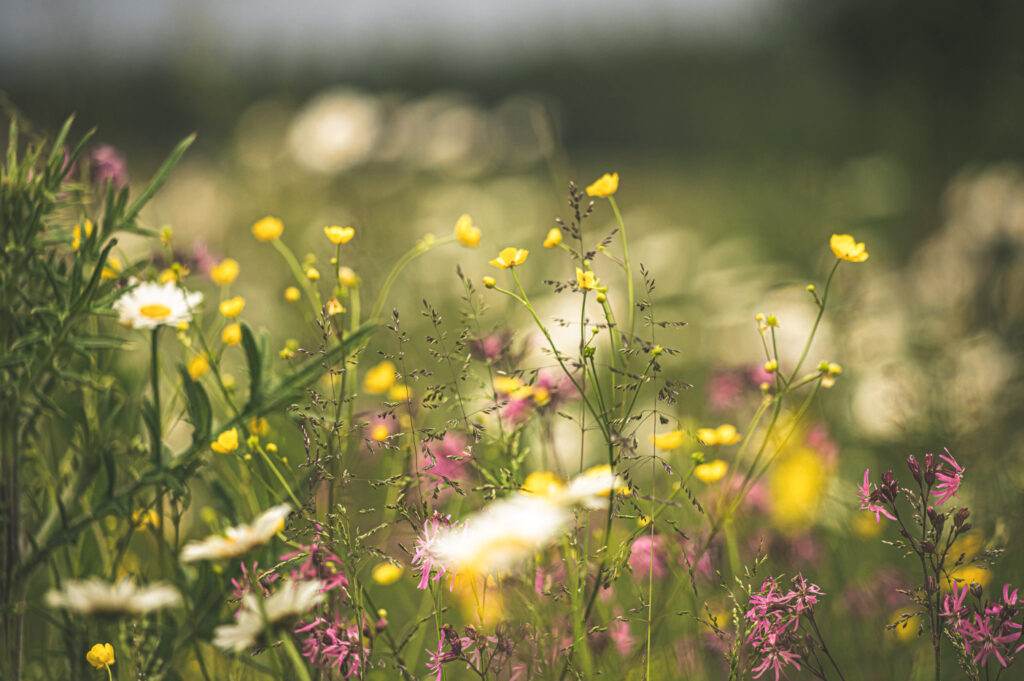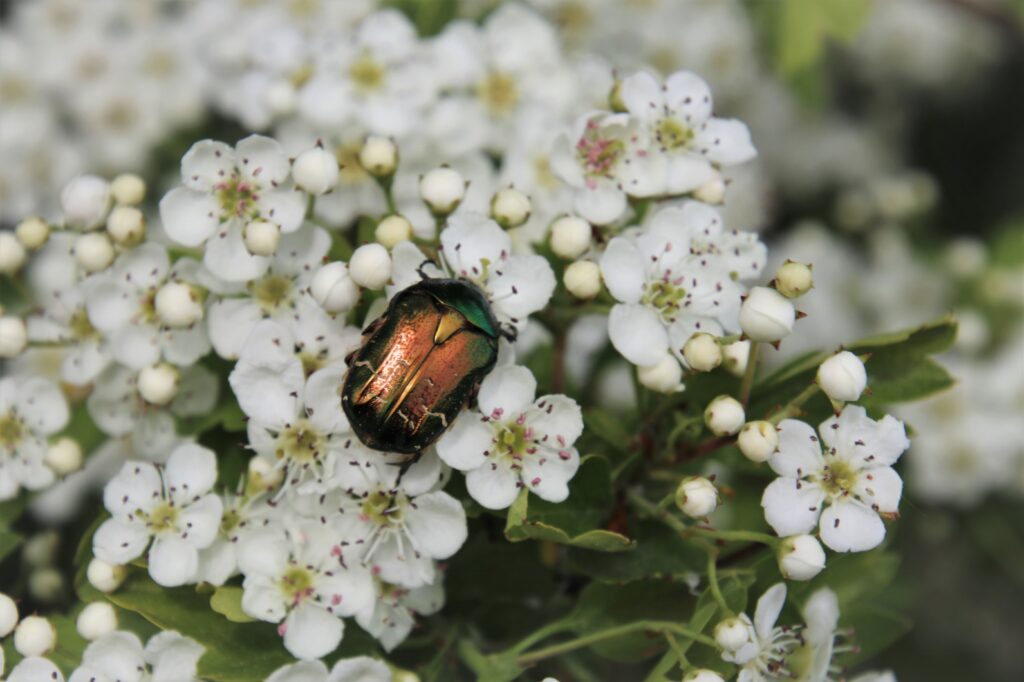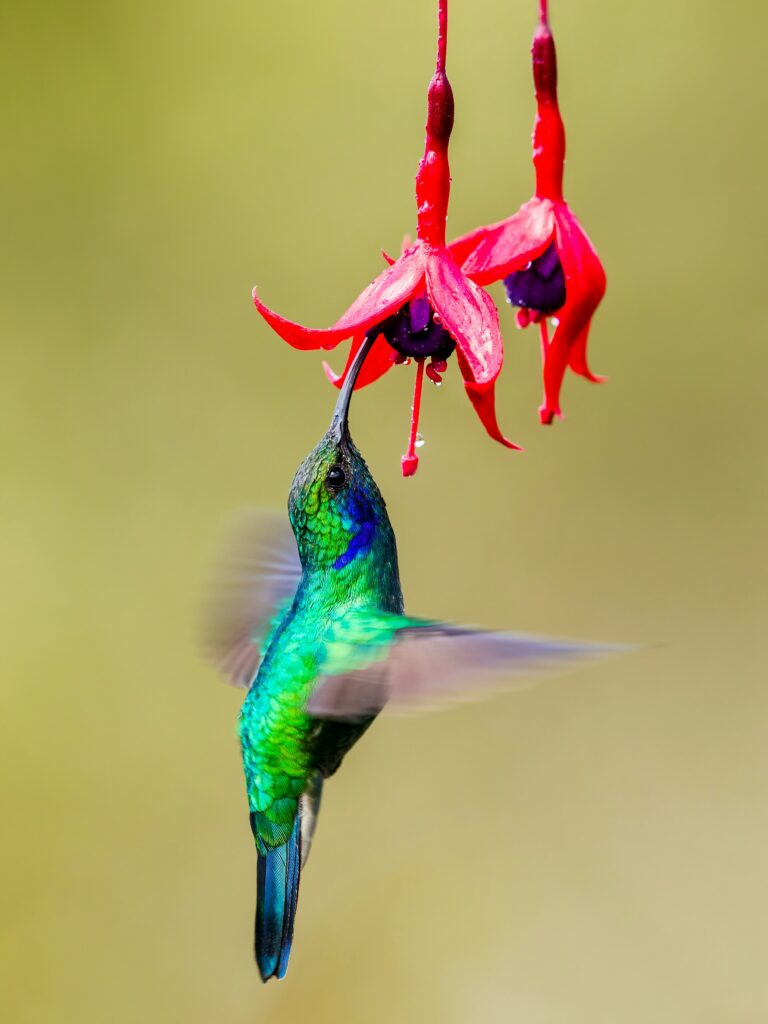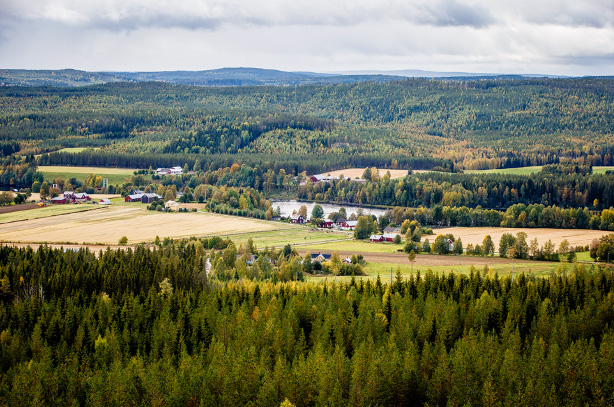This is how it works if you want to continue on another device
To save your progress if you want to continue on another device, there are several options. Copy or email a link, or read provided QR-code.
When you started the course, you will be able to continue on another device.
-
Read QR-code
Scan the following QR-code with your phone to continue where you left.
-
Copied
- Or email the link to yourself

What is Biodiversity?
Interspecies variation: Species level
Biodiversity is a collective term for the variety of all life. What we most often think of, and in many respects the most important part, is the variety of species. The diversity of plants and insects in a meadow is an example of this.
Species arise through evolution. It takes a very long time for a species to develop and the process cannot be repeated. If a species dies out, it is gone forever.

A meadow is a good example to illustrate the diversity of species that can exist in the same location.

Biodiversity encompasses all living organisms – from microorganisms in the soil and insects to large trees and mammals.
Vocabulary
Intrapecies variation: Genetic level

Genetic variation is the foundation of evolution and for species to adapt to changing conditions. It can be seen as a kind of insurance for the survival of the species – if the environment changes but there are individuals with the right genetic traits to survive, the species can still persist. Hummingbirds are an example of how individuals with long, slender beaks are favored because they can more easily access the nectar in the flowers they feed on.
Biodiversity also includes the genetic variation within a species, for example the variation between two birds or between two humans.
Genetic variation equips species to cope with changes such as climate change and new diseases.
But why is genetic variation in other species important for us humans? One example is that the food crops we grow have lost much of their resistance to disease due to intensive plant breeding. The genetic diversity of crops has been reduced in favor of larger yields, seedless fruits and smooth tomatoes.
The loss of genetic variation makes these species vulnerable, posing major risks to our societies. Imagine what could happen to our food supply if the most common variety of wheat is hit by a fungal disease that wipes out the harvest. Genetic diversity provides insurance against such disasters.
Variety of habitats: Ecosystem level
The concept of biodiversity also encompasses the variety of habitats in which all species live, across the globe, both on land and in water. These include forests, mountains, grasslands, lakes and oceans, all of which are very different and thus provide different conditions and habitats for different species. These different habitats are different ecosystems.

A variety of habitats, or ecosystems, creates conditions for a diversity of species. How ecosystems are interconnected is also important for species to be able to move within the landscape.
